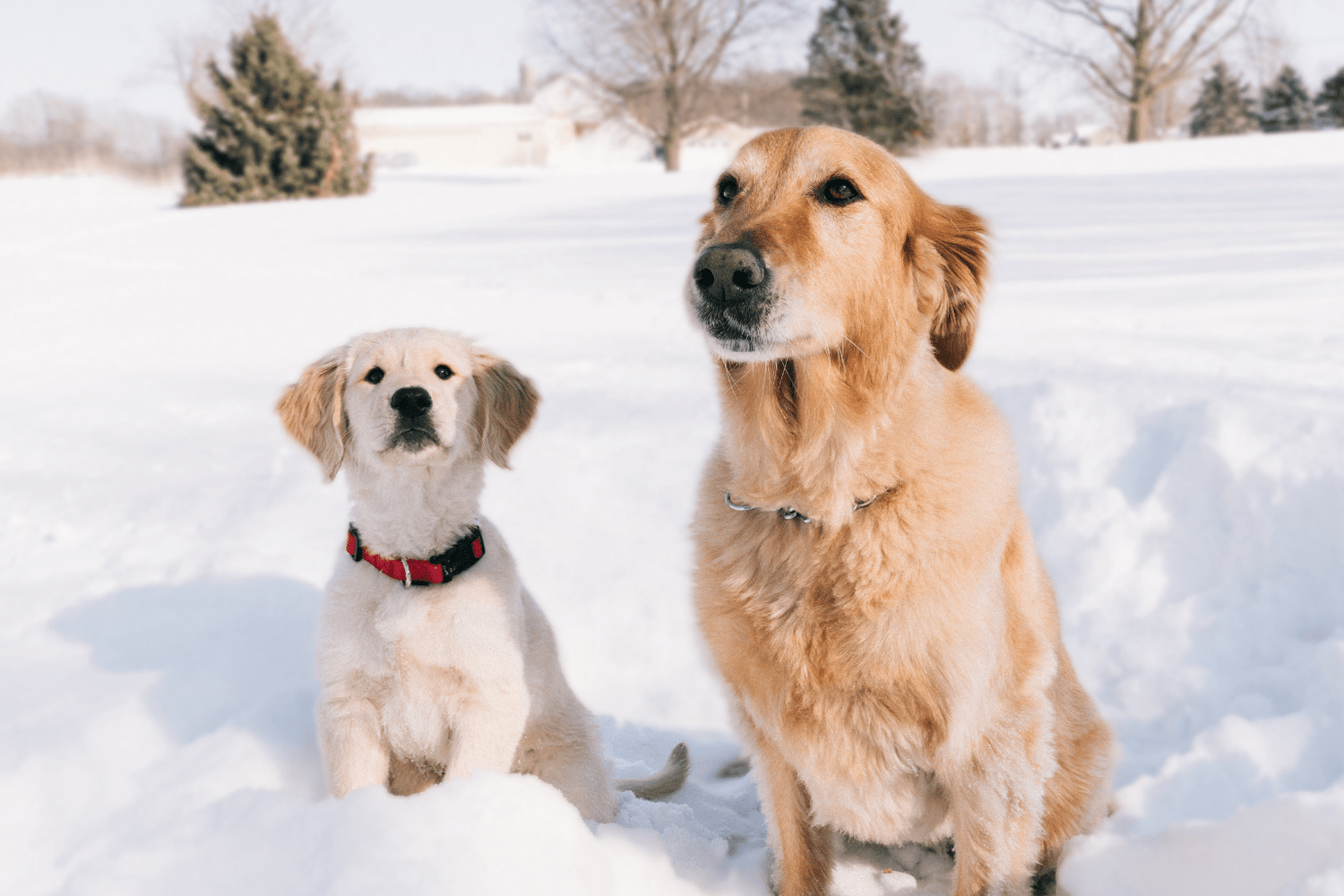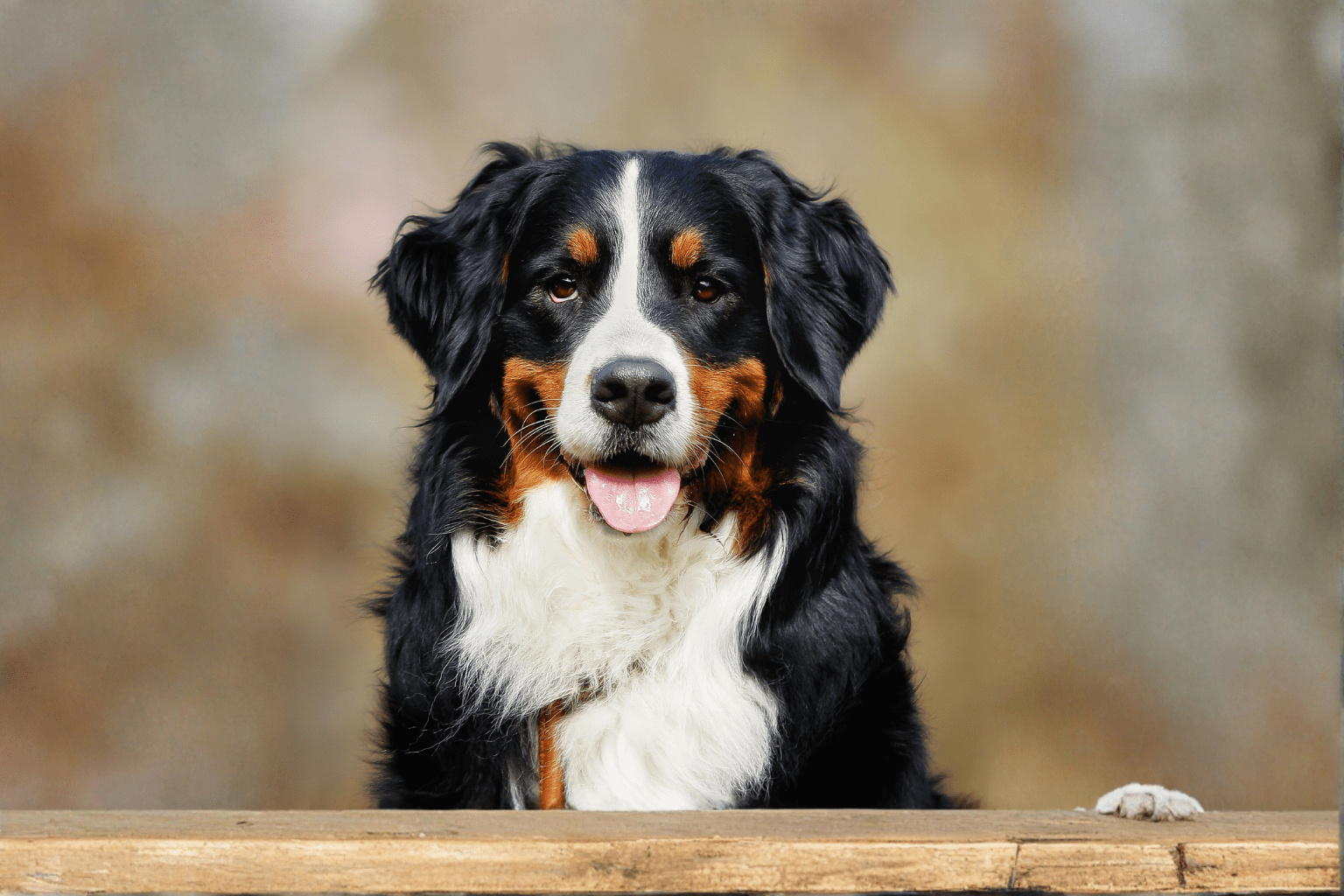Key Takeaways
- Some dog breeds naturally thrive in cold weather due to their anatomy and energy levels.
- Coat thickness alone does not determine a dog's ability to handle winter conditions.
- Choosing the right dog for winter or properly caring for your current pet is essential for enjoyable cold-weather experiences.
- Understanding how a dog's body manages cold stress can improve their comfort and safety during winter.
- Personal experience with winter hiking highlights the importance of selecting suitable winter canine companions.
Table of Contents
- What Makes a Dog "Winter-Ready"?
- Best Dog Breeds for Winter, Family Favorites & Tough Trail Partners
- Winter Risks, Keeping Your Dog Safe & Comfortable
- Avoiding Cold-Weather Dangers
- Winter Care Essentials, Nutrition, Shelter & Grooming
- Hiking, Playing, & Exercising Dogs in Winter
- Supporting Senior & Special-Needs Dogs in Winter
- Homeopathic Support for Winter Wellness
- Your Path to Natural Winter Wellness
Dogs for Winter: The Ultimate Natural Care & Breed Guide for Cold Months
When snow starts falling and temperatures drop, some dogs for winter thrive while others shiver. The difference isn't just coat thickness, it's anatomy, energy levels, and how well their bodies handle cold stress. As someone who's hiked Ontario's Bruce Trail through countless winters with my Border Collie mix Tango, I've learned that choosing the right winter companion (or caring for the one you have) makes all the difference between magical snowy adventures and worried nights by the heater.
Whether you're considering a snow dog breed or helping your current pup navigate their first harsh winter, this guide covers everything from breed selection to natural wellness support that keeps tails wagging when the mercury drops.
If you're looking for gentle, effective ways to help your dogs for winter stay healthy and resilient, explore our homeopathic pet supplements for natural health in dogs and cats for added support throughout the cold months.
What Makes a Dog "Winter-Ready"?
True winter breed dogs share three key adaptations that separate them from their warm-weather cousins. Their double coats work like high-tech insulation, a dense undercoat traps warm air while guard hairs repel moisture. Their compact, furry paws act like natural snowshoes, and their larger body mass retains heat more efficiently than smaller frames.
Anatomy of a Winter-Loving Dog
Double-coated breeds like Huskies and Malamutes essentially wear built-in parkas. The undercoat creates an insulating air pocket that maintains core body temperature, while outer guard hairs shed snow and ice. Single-coated dogs lack this thermal regulation system, making them vulnerable to hypothermia in temperatures below 45°F.
Paw structure matters equally. Dogs good in cold weather typically have compact, rounded feet with hair between their toes, natural traction control that prevents ice buildup and protects sensitive pads from frostbite.
How Dogs Regulate Body Temp in the Cold
When temperatures drop, dogs instinctively curl into tight balls to minimize heat loss through their extremities. Shivering generates warmth through muscle contractions, but it's an energy-expensive process that can't sustain long-term cold exposure.
Safe Temperature Guidelines: Most winter breeds handle 20-30°F comfortably for extended periods. Below 20°F, limit outdoor time to 15-30 minutes. Non-winter breeds need protection below 45°F.
Best Dog Breeds for Winter, Family Favorites & Tough Trail Partners

Choosing the right snow dog breeds depends on your lifestyle, living space, and activity level. Some breeds excel at backcountry adventures, while others adapt beautifully to suburban winter walks with proper care.
Big, Bold Breeds for Snow Adventures
Alaskan Malamutes and Siberian Huskies top the list for serious winter enthusiasts. Bred for Arctic conditions, they can work comfortably in temperatures down to -20°F. Bernese Mountain Dogs and Saint Bernards offer gentler temperaments for families, though they require more grooming maintenance.
These breeds need significant daily exercise, expect 60-90 minutes of vigorous activity, which actually increases their cold tolerance by boosting circulation and muscle heat generation.
Smaller Breeds That Hold Their Own
American Eskimo Dogs and Keeshonds prove that winter readiness isn't just about size. Their thick double coats and compact builds make them excellent apartment-friendly options for urban winter dog parents. Tibetan Terriers, originally bred in harsh mountain climates, adapt well to both indoor living and outdoor winter play.
Which Breeds Need Extra Winter Protection
Short-haired, lean breeds like Greyhounds, Whippets, and Chihuahuas struggle in cold weather due to minimal body fat and single coats. These dogs need protective clothing and limited outdoor exposure below 50°F, but they can still enjoy winter with proper gear and shortened walk schedules.
Winter Risks, Keeping Your Dog Safe & Comfortable
Even the most winter-hardy dogs for winter face seasonal hazards that require vigilant pet parents. Recognizing early warning signs and taking preventive measures can mean the difference between a fun snow day and an emergency vet visit.
Hypothermia & Frostbite in Dogs
Hypothermia symptoms progress from shivering and lethargy to pale gums and stumbling. Most dogs show initial signs after 30 minutes in temperatures below 20°F, though individual tolerance varies significantly. Frostbite typically affects ears, tail tips, and paw pads first, look for pale or grayish skin that feels cold to the touch.
The moment you notice persistent shivering or your dog lifting paws repeatedly, head indoors immediately. Gradual rewarming with blankets works better than direct heat sources that can cause burns on numb skin.
Protecting Paws, Nose, and Ears
Quality dog booties prevent ice buildup between toes and protect against salt burns from sidewalk treatments. Apply a pea-sized amount of paw balm before walks, focusing on pad cracks where moisture can freeze. Always wipe paws within five minutes of returning indoors to remove ice melt residue.
Avoiding Cold-Weather Dangers
Salt and ice melt products pose serious toxicity risks for dogs for winter adventures. These chemicals can burn paw pads on contact and cause vomiting, diarrhea, or seizures if licked off paws. Rinse affected paws immediately with warm water and contact your vet if you notice excessive drooling or lethargy.
Antifreeze presents an even deadlier threat, especially for city dogs walking near parked cars. Just one teaspoon can be fatal to a 20-pound dog. The sweet taste attracts curious pups, making prevention critical. Store antifreeze containers securely and clean up any spills immediately with absorbent materials.
Bailey, a Golden Retriever from Toronto, nearly ingested antifreeze during a downtown walk until her owner spotted the bright green puddle first. Thanks to protective booties and her mom's vigilance, Bailey stayed safe. This real story reminds us that winter dangers often hide in plain sight.
Winter Care Essentials, Nutrition, Shelter & Grooming

Cold weather increases caloric needs for active winter breed dogs by 10-25%, particularly for working breeds like Malamutes and Saint Bernards. Their bodies burn extra energy maintaining core temperature during outdoor activities. Provide fresh, unfrozen water twice daily, checking bowls every few hours in subzero conditions.
Feeding for Cold Nights
High-quality protein and healthy fats fuel your dog's internal heating system during winter months. Add an extra quarter-cup of food for every 10 degrees below freezing during extended outdoor time. Our gentle pellet supplements support immune health naturally, helping dogs for winter maintain their energy and resilience without harsh chemicals.
For more tips on nutrition and healthy additions to your dog's diet, you might enjoy our article on peas for dogs as a winter-friendly treat.
Cozy, Safe Shelters for Outside Time
Effective winter shelters feature insulated walls, raised floors, and fitted doors that block wind while allowing easy entry. The shelter should be large enough for your dog to stand and turn around, but small enough to retain body heat.
| Material | Insulation Rating | Best For | Temperature Range |
|---|---|---|---|
| Cedar with foam core | Excellent | Large breeds | -20°F to 40°F |
| Plastic with straw | Good | Medium breeds | 0°F to 40°F |
| Metal with blankets | Poor | Emergency only | Above 20°F |
Grooming, The Shedding Realities
Double-coated breeds require daily brushing during winter to prevent matting and maintain insulation properties. Never shave these dogs, as their undercoat regulates temperature naturally. Use a slicker brush for the topcoat and an undercoat rake twice weekly to manage indoor shedding effectively.
If you're wondering about seasonal changes in your dog's coat, our guide on is it shedding season for dogs offers helpful insights for winter grooming routines.
Hiking, Playing, & Exercising Dogs in Winter
Winter exercise keeps dogs for winter mentally stimulated and physically healthy, preventing seasonal depression and weight gain. Start with shorter 15-minute sessions and gradually increase duration as your dog acclimates to colder temperatures.
Choosing Dog-Safe Trails & Parks
Research trail conditions before heading out, focusing on paths with minimal ice melt usage and adequate shelter options. Many municipal parks post winter dog restrictions online, particularly during extreme weather warnings. Choose routes with natural windbreaks and avoid exposed ridge lines during high wind conditions.
Gear Up! Must-Have Equipment
Properly fitted jackets should cover your dog's chest and belly without restricting movement. Test the fit by ensuring your dog can sit, walk, and play comfortably for at least three minutes. Collapsible water bowls prevent dehydration, while reflective harnesses improve visibility during shorter winter days.
Troubleshooting Common Problems
Reluctant dogs often respond to positive reinforcement and gradual exposure. Start with five-minute outdoor sessions, increasing by two minutes daily until your dog shows enthusiasm. For senior dogs struggling with joint stiffness, our WALK-EASY® Hip & Joint Pain Relief can help support mobility during cold weather activities.
For more detailed aftercare tips and support for dogs recovering from joint issues, check out our post on hip and joint surgery after care tips for dogs and cats.
Supporting Senior & Special-Needs Dogs in Winter
Older dogs and those with health conditions require modified winter care approaches. Arthritis symptoms often worsen in cold weather, while compromised immune systems make temperature regulation more challenging.
Gentle Joint & Mobility Support
Choose soft-surface paths like snow-covered grass over icy pavement to reduce joint impact. Allow five minutes of gentle movement indoors before venturing outside, helping stiff joints warm up gradually. Our WALK-EASY® Hip & Joint Pain Relief provides natural support for aging dogs, following simple dosing guidelines that make daily care effortless.
For additional winter safety guidance, consult these cold weather animal safety tips from the American Veterinary Medical Association.
Stealthy Care for Picky Eaters
Pellet remedies hide easily in regular food, making supplement time seamless for finicky pets. Our pellets dissolve quickly without altering taste or texture, making them perfect for cats who refuse liquid medications or dogs who detect supplements from miles away.
The key is consistency, mix pellets into wet food or treats at the same time daily. Most pet parents find success hiding them in a small amount of their pet's favorite meal, ensuring the full dose gets consumed before offering the rest of their food.
Comfort Solutions for High-Maintenance Pets
Special-needs pets require extra winter consideration. Create warm microclimates indoors with heated beds positioned away from drafts. For arthritic dogs, orthopedic foam provides joint relief during cold snaps when stiffness peaks.
Fiona discovered this firsthand when her senior cat struggled through his first winter after diagnosis. A combination of heated sleeping areas, gentle mobility support, and our targeted pellet remedies transformed his comfort level. Within weeks, he was seeking sunny windowsills again instead of hiding under blankets all day.
Homeopathic Support for Winter Wellness

Natural remedies complement traditional veterinary care by supporting your pet's inherent healing mechanisms. Our pellet formulations target common winter challenges without the side effects often associated with conventional medications.
How Our Gentle Pellets Work
Unlike liquid formulations that can be messy and difficult to dose accurately, our pellets provide precise, consistent delivery. Each pellet contains carefully balanced homeopathic ingredients that dissolve completely, making administration stress-free for both you and your pet.
The beauty of pellet form lies in its simplicity, no measuring, no waste, no refrigeration required. Store them at room temperature and they maintain potency for years, making them ideal for emergency preparedness and daily maintenance routines.
Important: Our remedies support the body's natural healing processes and help maintain comfort during seasonal transitions. They are not a substitute for professional veterinary advice, especially for serious health concerns.
Targeted Solutions for Common Winter Concerns
Joint stiffness intensifies during cold months, particularly in senior pets and larger breeds. Our mobility-supporting pellets help ease discomfort naturally, allowing dogs for winter activities to remain enjoyable rather than painful.
Skin irritation from dry indoor air and outdoor elements responds well to gentle, internal support. Rather than relying solely on topical treatments that pets often lick off, our pellets work from within to support healthy skin barrier function.
Immune system challenges peak during temperature fluctuations and increased indoor time with family. Supporting natural defenses helps pets maintain vitality throughout the season's demands.
Real Results from Pet Families
Rachel's rescue operation houses over thirty animals, making winter care both critical and budget-conscious. She relies on our multi-purpose pellets to address various comfort needs across different species and ages. "The pellets work for my arthritic Great Dane and my senior cats equally well," she shares. "That versatility saves money and cabinet space."
Gary noticed his aging Labrador struggling with morning stiffness during cold snaps. After incorporating our joint-supporting pellets into the daily routine, weekend hiking adventures resumed. "He's back to bounding through snow drifts like a puppy," Gary reports with obvious delight.
For more expert advice on keeping pets safe in winter, see these winter pet care tips from vets.
Your Path to Natural Winter Wellness
Successful winter care combines breed-appropriate preparation, environmental awareness, and proactive comfort support. Whether you're managing a snow-loving Malamute or helping a senior rescue navigate their first cold season, the principles remain consistent: prepare thoughtfully, respond quickly to concerns, and support naturally when possible.
The dogs for winter journey becomes more rewarding when we embrace both the season's challenges and its unique joys. Cold weather creates opportunities for deeper bonding, new adventures, and the satisfaction of providing comprehensive care that honors our pets' individual needs.
Our pellet remedies represent just one tool in your winter wellness toolkit, designed to complement the love, attention, and veterinary care that form the foundation of responsible pet ownership. Together, we can help every pet family navigate winter with confidence, comfort, and natural vitality.
Ready to support your pet's winter wellness naturally? Browse our complete line of gentle, effective pellet remedies, or reach out with questions about your pet's specific needs. Every purchase supports rescue organizations providing winter shelter for animals in need, because nurturing with nature means caring for our entire pet community.
Frequently Asked Questions
What anatomical features make certain dog breeds more suited for cold winter conditions?
Dogs built for winter often have double coats with a dense undercoat that traps warm air and outer guard hairs that repel moisture. They also tend to have compact, furry paws that act like natural snowshoes and a larger body mass that helps retain heat more efficiently.
How can I keep my non-winter breed dog safe and comfortable during cold weather?
For dogs without winter-ready anatomy, it’s important to limit exposure to cold, provide warm shelter, and consider protective gear like dog coats or booties. Keeping their nutrition balanced and offering gentle homeopathic support can also help maintain their comfort and resilience.
Which dog breeds are best recommended for active winter lifestyles like hiking and snow activities?
Breeds like Siberian Huskies, Bernese Mountain Dogs, and Malamutes are top picks for winter adventures due to their thick double coats, high energy, and natural ability to manage cold stress effectively.
What natural or homeopathic supplements can support my dog's health during the winter months?
Homeopathic pet supplements designed for winter wellness can help support your dog’s natural healing and maintain comfort during cold months. These gentle remedies work alongside good nutrition and care to promote overall resilience without side effects.



